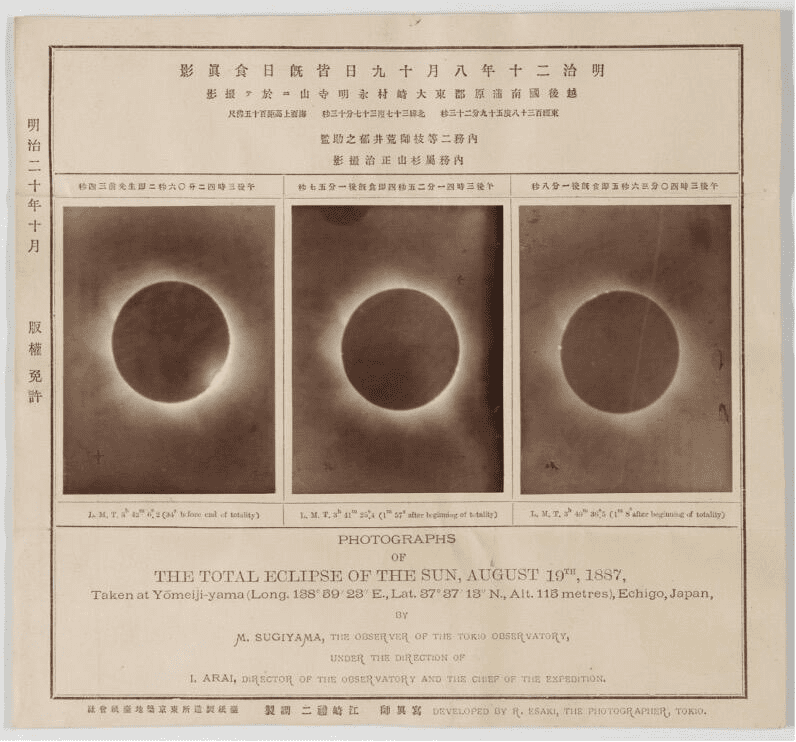Astronomers are filling in gaps in our knowledge of ancient events by deciphering descriptions from folklore and ancient texts. In accounts of three solar eclipses from the island of Hokkaido, they have found one description that is both poetic and potentially quite scientifically important.
Before the mid-19th century, written astronomical records from Hokkaido are sparse, as Dr Hisashi Hayakawa of Nagoya University and colleagues report in the new paper. However, when the researchers took a broader view they found a letter written by the Anglican missionary John Batchelor, who wrote several works on the culture of the Ainu, the indigenous people of the northernmost of Japan’s main islands.
In 1887 a total solar eclipse was viewed, and even photographed from parts of Japan. Batchelor was outside the path of totality, but he prepared blackened glasses to safely view the partial blocking of the Sun, and show it to local Ainu. Batchelor reported that the Ainu referred to an ancestral account of a “black dead Sun” surrounded by “tongues of fire and lightning”, as well as dogs howling and birds roosting. “Then the sun began to return to life, and the faces of the people wore an aspect of death; and as the sun gradually came to life, then men began to live again,” Batchelor wrote.

“However, there was no explicit date for the event,” that Batchelor was referring to, Hayakawa said in a statement. However, Batchelor also wrote; “When my father was a child he heard his old grandfather say that his grandfather saw a total eclipse of the sun.” Hayakawa and co-authors used this, and our astronomical knowledge of when eclipses have occurred over Hokkaido, to match the description to the eclipse of 1824.
Since our knowledge of celestial mechanics is sufficient to place eclipses hundreds of years in the future or the past, the astronomical significance of an account like this is not immediately obvious. However, while what Batchelor reported would be a typical description of a total solar eclipse today, it’s something of a surprise for the time.
The streamers referred to are likely to be the solar corona, often visible with the naked eye during eclipse totality. However, this eclipse took place during the Dalton Minimum, a thirty-year period where sunspots almost disappeared, and only a year after a cyclical minimum within the minimum.
Eclipse descriptions during the longer and deeper Maunder Minimum, indicate not an absence of sunspots; coronal streamers were not described during eclipses of the era. If such streamers were visible at this point during the Dalton Minimum, something Hayakawa also found reported from 1806, it indicates an important difference between the two events. Explaining this could increase our understanding of solar activity.
The paper also explores two other eclipses seen from Hokkaido. One of these, from 1786, was described in a travel account by Tokunai Mogami. Previously thought to have been an annular eclipse (one where the Moon is in a distant part of its orbit and does not completely block the Sun), the authors conclude this was instead a rare hybrid eclipse. Hybrids are annular for part of their path and total for others, thanks to the Earth’s curvature. Given his location, Tokunai would have seen only a partial eclipse, 4 percent short of totality. A description by Kan’ichiro Mozume has been matched to an annular eclipse of 1872.
The paper is published in Publications of the Astronomical Society of Japan.
Source Link: Tales Of A Black Dead Sun Survive Generations After A Total Eclipse